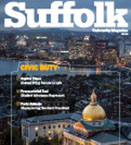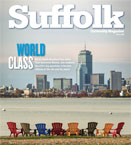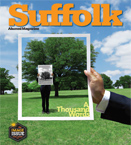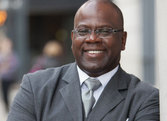The Telltale Art
Suffolk Professors promote Poe statue for Boston.
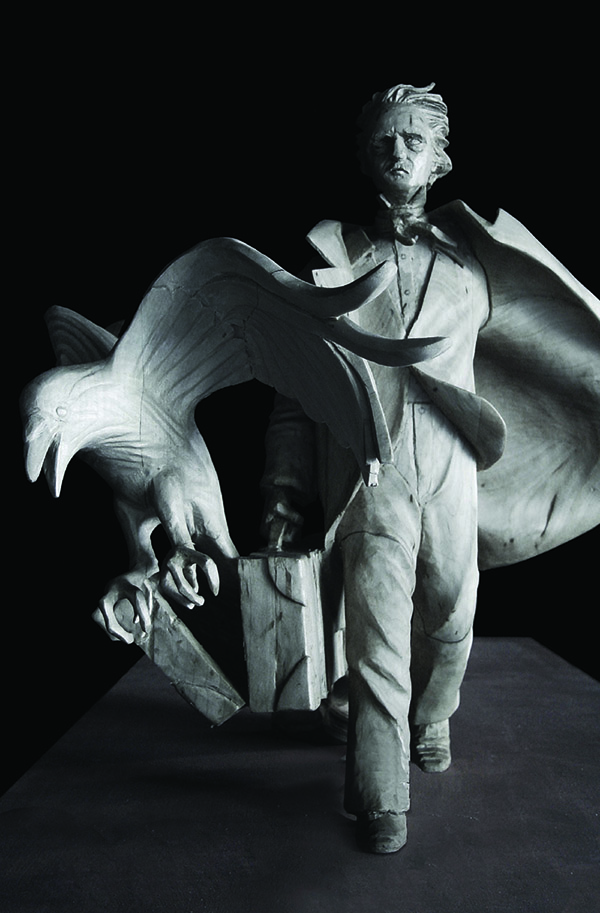
Baltimore is the geographic location most associated with Edgar Allan Poe. He called the “Charm City” home when he published his most famous work, The Raven, and died there under mysterious circumstances in 1849. His home and gravesite are now popular tourist attractions. Even the name and logo of the city’s NFL team, the Ravens, is a jaunty nod to the writer, as is its mascot, Poe. Yet, unbeknownst to many, Poe is a native son of Boston.
Now Suffolk professors have joined an effort by the Edgar Allan Poe Foundation of Boston to honor him with a statue called “Poe Returning to Boston” near where he spent the first three years of his life. Sculptor Stefanie Rocknak designed a spectacular statue that depicts a steely-eyed Poe, his briefcase literally bursting with his work and flanked by a raven, striding toward his birthplace, 62 Carver Street, which is now Charles Street South. (The house was razed in 1959.)
The University recently hosted the panel “Poe Statue Project: Public Art, Creativity, Politics, and the Law.” While there area few small plaques around the city memorializing Poe, there’s never been “a proper commemoration” befitting his stature in American literature, says Suffolk Associate English Professor Peter Jeffreys, who teaches Poe in his American Gothic class.
Though Poe had what Jeffreys calls a “love-hate relationship” with Boston, it does not obscure the fact that he remains its most famous native-born writer. Plus, such an honor is something that likely would have made Eliza Poe, Edgar’s mother, very happy. On a watercolor of Boston Harbor, she inscribed to him: “For my little son Edgar, who should ever love Boston, the place of his birth, and where his mother found her best and most sympathetic friends.”
